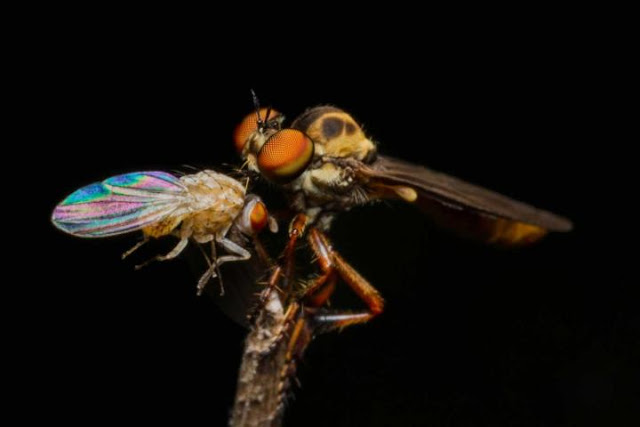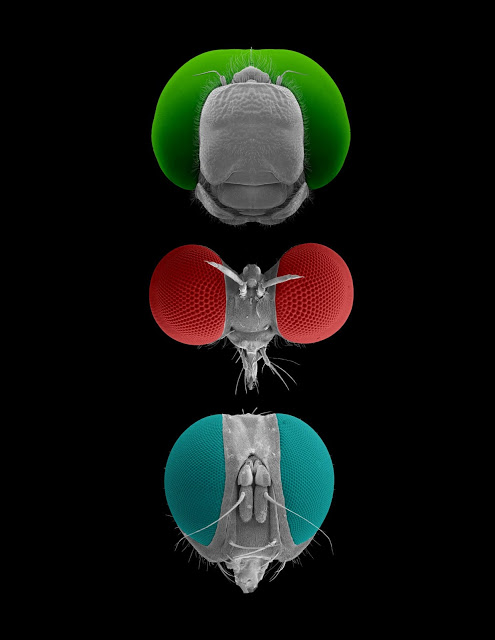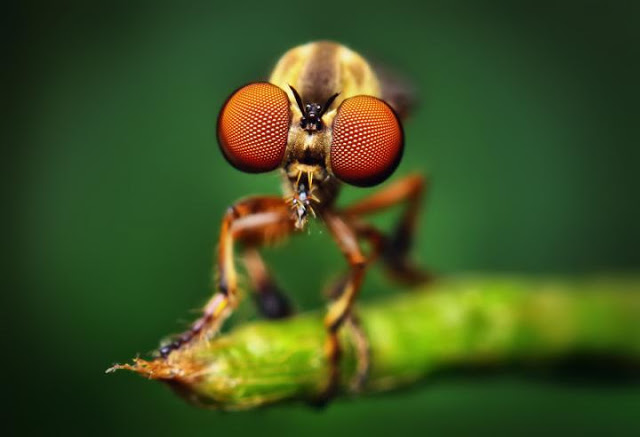

| Online: | |
| Visits: | |
| Stories: |

| Story Views | |
| Now: | |
| Last Hour: | |
| Last 24 Hours: | |
| Total: | |
Robber Fly’s Superb Aerial Hunting Skill Relies on Extreme Visual Acuity
Their movies show that robber flies sit and wait for a tempting prey item (or a bead) to fly past. Once they do, the flies take off using an interception strategy known as constant bearing angle (CBA), keeping their prey at a constant angle to ensure that they’ll eventually meet. That’s impressive, but there’s more. Once the robber fly reaches a distance of about 30 centimeters from its target, it “locks on,” slowing down and curving its flight path to make a successful catch even more likely. Their secret to pulling it off is all in the eyes.
This photograph shows an unlucky fruit fly that did not escape the keen eyes and aerial virtuosity of Holcocephala, who now sits on a stick consuming its prize.
Credit: Sam Fabian
The researchers, including Gonzalez-Bellido and Trevor Wardill, made their discovery by presenting flies in their natural habitats with beads ranging from about 1 to 4 millimeters in diameter on a fishing line. They recorded the flies’ reaction to seeing one of those beads zoom past using two high-speed video cameras. The films allowed them to reconstruct the insects’ precise flight trajectories in three dimensions.
This is a Scanning Electron Microscopy (SEM) image of the three predatory insects (dragonfly, Robber fly and Killer fly), with psudocolored eyes.

Credit: Sam Fabian, with assistance for processing by the CAIC centre
“We have shown that when such a miniature nervous system is under strong pressure, the resulting adaptions allow the animal to find solutions that we often think pertaining to much larger animals,” Gonzalez-Bellido says. “For example, an acute fovea and the use of CBA are known from large predators, including humans.” In other words, even the littlest creatures can have impressive sensory and cognitive abilities.
This photograph shows the small robber fly Holcocephala, waiting patiently on a stick until an unsuspecting prey is detected with the help of those highly specialized eyes.
Credit: Thomas Shahan
The researchers say they’re still working to understand how the insects know when to lock on and shift their path and speed. They’re also exploring how the behavior is driven at the cellular level.
This work was funded by the Air Force Office of Scientific Research, an Isaac Newton Trust/Wellcome Trust ISSF/University of Cambridge Joint Research Grant, a Biotechnology and Biological Sciences Research Council David Phillips Fellowship, a Royal Society International Exchange Scheme grant, a Swedish Research Council grant, and a Shared Equipment Grant from the School of Biological Sciences (University of Cambridge).
Joseph Caputo
Cell Press
Source: http://www.ineffableisland.com/2017/03/robber-flys-superb-aerial-hunting-skill.html


